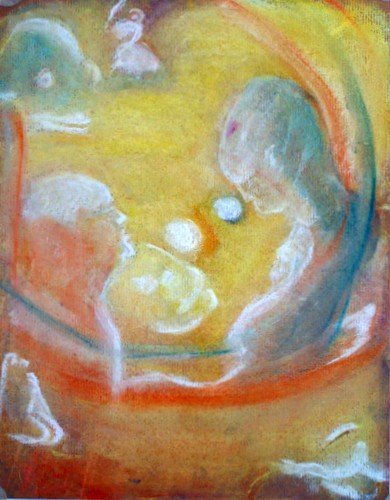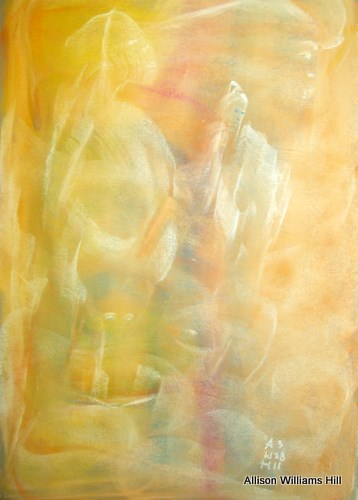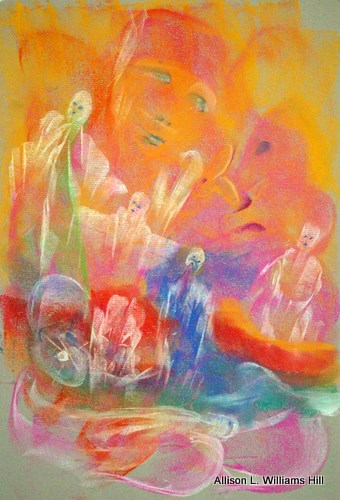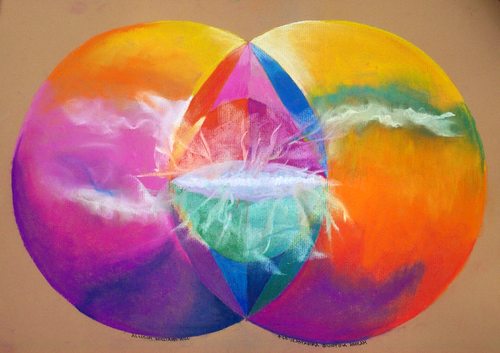The Thought-Form
from "The Hidden Side of Things"
Chapter XIX: By What We Think
by CW Leadbeater
The work of the thought-form is more limited, but much more precise than that of the wave. It cannot reach so many persons-- indeed, it cannot act upon a person at all unless he has in him something which is harmonious with the vibrant energy which ensouls it. The powers and possibilities of these thought-forms will perhaps be clearer to us if we attempt to classify them. Let us consider first the thought which is definitely directed towards another person.

1. When a man sends forth from himself a thought of affection or of gratitude (or unfortunately it may be sometimes of envy or jealousy) towards some one else such a thought produces radiating waves precisely as would any other, and therefore tends to reproduce its general character in the minds of those within the sphere of its influence. But the thought-form which it creates is imbued with definite intention, and as soon as it breaks away from the mental and astral bodies of the thinker, it goes straight towards the person to whom it is directed and fastens itself upon him.

Merge with Krishna by Allison L. Williams Hill
If he happens at the moment to be thinking of nothing in particular, and is consequently in a passive condition, it at once penetrates his mental and astral bodies and is lost in them, just as a comet might fall into the sun. It tends to arouse in them vibrations similar to its own-- which means that the man will begin to think upon that particular subject, whatever it may be. If he is in a condition of mental activity, and any part of that activity is of the same nature as the arriving thought-form, it enters his mental body through that part of it which is expressing the sympathetic thought, and adds its strength to that thought. If the recipient' s mind is so preoccupied that the thought-form cannot find entrance, it will hover about him until he is sufficiently disengaged to give it an opportunity to gain its object.

2. In the case of a thought which is not directed to some other person, but is connected chiefly with the thinker himself (as indeed are the majority of men' s thoughts) the wave spreads in all directions as usual, but the thought-form floats in the immediate neighbourhood of its creator, and its tendency is constantly to react upon him. As long as his mind is fully occupied with business, or with a thought of some other type, the floating form waits, biding its time; but when his train of thought is exhausted, or his mind for a moment lies fallow, it has an opportunity to react upon him, and it immediately begins to repeat itself-- to stir up in him a repetition of the thought to which he has previously yielded himself. Many a man is surrounded by a shell of such thought-forms, and he frequently feels their pressure upon him-- a constant suggestion from without of certain thoughts; and if the thought be evil he may believe himself to be tempted by the devil, whereas the truth is that he is his own tempter and that the evil thoughts are entirely his own creation.

1. There is the class of thought which is neither centred round the thinker nor specially aimed at any person. The thought-form generated in this case does not hang about the thinker, nor has it any special attraction towards another man, so it remains idly floating at the place where it was called into existence. Each man, as he moves through life, is thus producing three classes of thought-forms:
a.Those which shoot straight out away from him, aiming at a definite objective.
b.Those which hover round him and follow him wherever he goes.
c.Those which he leaves behind him as a sort of trail which marks his route.
i. The whole atmosphere is filled with thoughts of this third type, vague and indeterminate; as we walk along we are picking our way through vast masses of them, and if our minds are not already definitely occupied, these vague, wandering fragments of other people' s thoughts often seriously affect us. They sweep through the mind which is lying idle, and probably most of them do not arouse in it any especial interest; but now and then comes one which attracts attention, and the mind fastens upon it, entertains it for a moment or two, and dismisses it a little stronger than it was on arrival.

ii. Naturally this mixture of thoughts from many sources has no definite coherence; though any one of them may start a line of associate ideas, and so set the mind thinking on its own account. If a man pulls himself up suddenly as he walks along the street, and asks himself:
"What am I thinking about, and why? how did I reach this particular point in my train of thought?" and if he tries to follow back the line of his thoughts for the last ten minutes, he will probably be quite surprised to discover how many idle and useless fancies have passed through his mind in that space of time. Not one-fourth of them are his own thoughts; they are simply fragments which he has picked up as he passed along. In most cases they are quite useless, and their general tendency is more likely to be evil than good.
Links



















